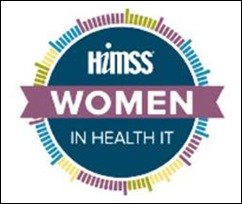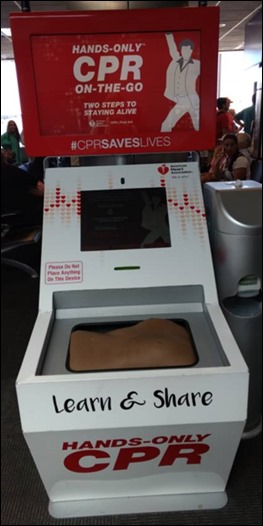Curbside Consult with Dr. Jayne 9/11/17
Over the last several years, I have worked with a number of organizations that are trying to improve their corporate cultures. I have to give them full credit first for realizing that they had cultural issues, and being willing to reach out for help. I do most of my work in this area as a subcontractor for another consulting firm, which likes to bring me in because I can not only do the work but I have the MD behind my name. There are a lot of physicians who need coaching (and sometimes coaxing) who respond better to a peer with the same degree, regardless of their understanding of your level of experience behind the credentials. Some of their clients are large health systems and some are smaller, but everyone is facing similar stresses brought on by the pace of change in healthcare.
Many of the issues that we deal with are “light” cultural issues – basically having a set of rules, whether written or not, about how teams work together and how meetings are run. These are some of the low hanging fruit-type items, such as making sure meetings have agendas, that we work on scheduling policies and procedures, and that we work on managing meeting dynamics. Often, people are resistant to change for the sake of resisting change, or because they’re stressed about getting their work done. Having agendas and scheduling protocols can help reduce the overall burden of meetings. Once workers start to see that following the rules of engagement helps get them out of meetings and back to other activities, they begin to buy in to some of the larger changes that we need to make.
We typically have to get people to that place where they know they’re not going to be undergoing “death by meeting” as much as they’re used to, before we introduce some of the more challenging concepts such as device-free meetings. One has to move carefully towards that goal, especially with organizations that have been through layoffs or reorganizations. In these cases, teams may be understaffed and employees figure they’re running a hundred miles an hour and can’t keep up. They multitask during meetings, working on email and texts either overtly or under the table. Eventually we need to get rid of those distractions, but you’ve got to have some breathing room first. When people know the meeting will finish on time or early and they will have time to check email, get something to drink, and hit the restroom, they’re more likely to play along with other changes you need to make.
The goal is to get everyone to focus on the meeting at hand – not on their next meeting, or all the other things they have to do when this one is over. In other words, to be fully present and attentive to what is in front of them. It’s difficult enough to do when people are so used to multitasking or being instantly accessible to others, but it’s even more difficult to do when you try to do that kind of a transformation without a plan. I worked on an HIE project a few years ago with an organization that handed out custom challenge coins with the phrase “Be Present” to every employee without any kind of background or lead up to the initiative. The first thing that people speculated on was how much money the organization had spent on it, especially when staff hadn’t had a pay increase in several years and people had been downsized.
A couple of weeks later, when the actual initiative was rolled out, it was regarded as a joke. I would be on conference calls where people were blatantly ignoring what was going on, and rather than even try to cover with an “excuse me, can you repeat that” or “I missed the question” they’d actually say, “I’m sorry, I wasn’t fully present” as if that absolved them from being disrespectful. The first time I heard it, I was just grateful that I was also on the phone and that I wasn’t in a room full of people who could see my expression of horror. I encouraged management to address the comment directly with the employee in question, but they didn’t want to “ruffle feathers.” Since there were no repercussions, others felt emboldened to do the same thing, and the idea of “not being fully present” actually started to work its way into the corporate culture. I was glad to be working on the HIE project and that I wasn’t wearing my change leadership hat for that one. Watching their efforts implode was painful but taught me a great deal about what not to do when working on cultural transformation projects.
I hear similar tales of woe from some of my physician colleagues whose practices have been acquired by larger organizations. A couple of them are part of an organization that is focusing cultural transformation around the idea of assuming positive intent. There are plenty of leadership experts that support this philosophy as a way to help move organizations forward through difficult times. When you’re being asked to change, assuming that it is for the better can smooth the way. Groups trying to change rapidly may not have time to explain the full who, what, where, when, why, and how, so the phrase aims to encourage people to trust those that are leading them and working with them so that everyone can advance. It can be a great productivity booster as people free themselves from worrying about the ulterior motives of others.
Depending on who you talk to or whose materials you read, however, there’s another piece to the phrase: Assume positive intent until proven otherwise. This means that when negative intent is identified, people who are creating chaos need to be dealt with so that they no longer have the ability to disrupt or harm others. It’s hard to do that tough work though, and none of us particularly enjoy dealing with disruptive people. I’m hearing more and more about organizations that seem to be looking the other way or that are unwilling to deal with difficult people, asking their co-workers to just go along with it for the sake of assuming positive intent. I’ve heard stories about other organizations who have used the concept as a way to counter poorly-led or hastily-planned initiatives. Asking your employees to assume positive intent when you don’t have your leadership act together is not the way to build trust or move towards success. Changing corporate culture is incredibly difficult and it’s best when coming from both the top and bottom.
Is your organization working on corporate culture? Has your team asked you to assume positive intent? Email me.

Email Dr. Jayne.
















The sentence was "most people just go to Epic UGM" - that's people going to Epic's annual user conference and…